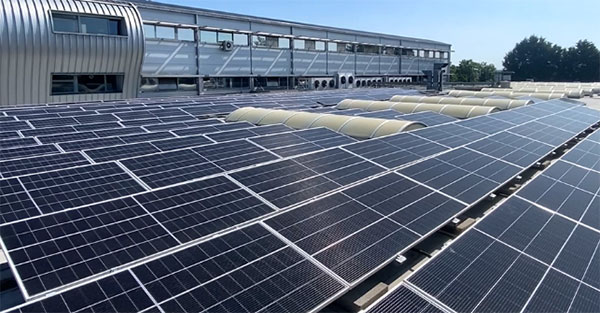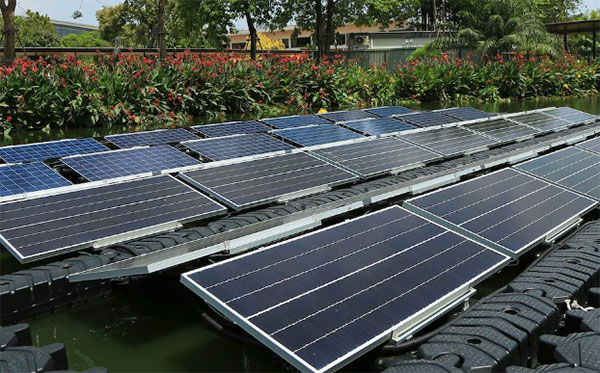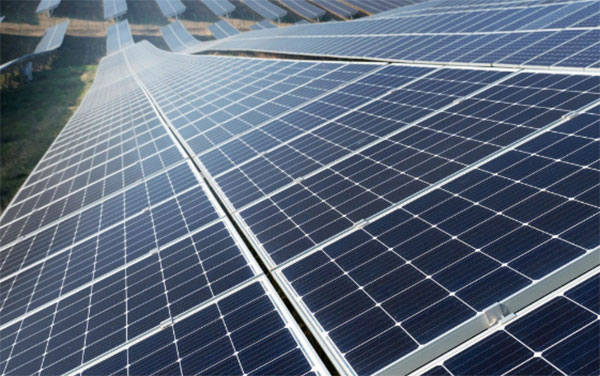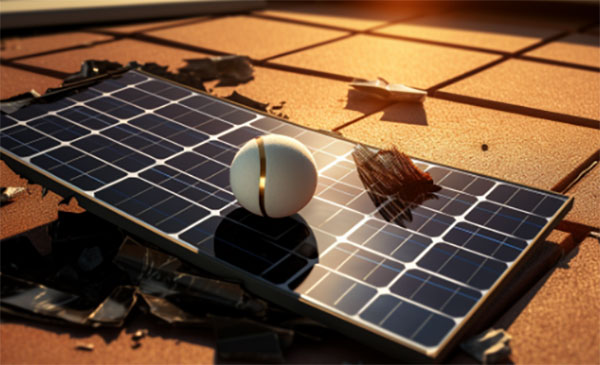Description
Yes, you can cover solar panels with plastic, but it must be UV-resistant and transparent to not hinder performance.

Understanding Solar Panel Protection
The Need for Solar Panel Protection
Solar panels, critical for harnessing solar energy, demand protection against environmental threats to maintain their efficiency and longevity. Protection is vital to shield these investments from physical damage caused by debris, hail, or severe weather conditions.
The average lifespan of unprotected solar panels can decrease significantly from 25 to 30 years, primarily due to external damages and efficiency losses.
Common Materials Used for Protecting Solar Panels
Polycarbonate Covers
Polycarbonate covers are renowned for their durability and high impact resistance. These covers can extend the lifespan of solar panels by providing a sturdy barrier against physical damage.
A typical polycarbonate cover might cost between $50 to $100 per square meter, depending on thickness and UV resistance levels. They are lightweight, with a density of about 1.2 g/cm³, making installation straightforward without significantly adding to the load on supporting structures.
Polycarbonate covers can reduce solar panel efficiency by up to 10%, a trade-off for increased protection. However, their transparency and UV resistance help mitigate this impact over time.
Tempered Glass
Tempered glass is another popular choice for solar panel protection, offering excellent durability and resistance to impact.
With a cost ranging from $40 to $80 per square meter, tempered glass is a cost-effective solution for safeguarding solar panels. This material maintains a clear view for sunlight penetration, ensuring minimal interference with solar panel efficiency, which might experience a negligible reduction of about 5%.
Tempered glass boasts a high strength-to-weight ratio, providing robust protection without the need for heavy support structures. Its lifespan matches that of solar panels, ensuring protection throughout their operational years.
Selecting the right material for solar panel protection involves considering factors such as cost, impact on efficiency, and environmental conditions. While polycarbonate covers offer superior impact resistance and lightweight advantages, tempered glass provides a balance between protection and efficiency maintenance.

Analyzing the Impact of Plastic Covers on Solar Panels
Effects on Solar Panel Efficiency
Using plastic covers on solar panels can lead to a variety of impacts on their efficiency. These effects range from slight reductions to significant losses in power output. Key factors include:
- Transparency and light transmission: High-quality plastic covers with excellent transparency can minimize efficiency losses. However, even the best materials typically reduce solar panel efficiency by 5% to 10% due to light reflection and absorption.
- Surface texture and coating: Some plastics are treated to enhance light absorption or reduce glare, which can help mitigate efficiency losses. Innovations in material science have led to plastic covers that enhance the light's path into the solar cells, slightly improving efficiency under certain conditions.
Important Considerations:
- Material quality: The purity and clarity of the plastic significantly affect solar transmission. Higher-grade plastics, although more expensive, tend to offer better light transmission, with costs ranging from $10 to $50 per square meter.
- Environmental factors: Dust, dirt, and weathering can further impact the efficiency of solar panels with plastic covers. Regular cleaning and maintenance are essential to maintain optimal performance.
Durability and Longevity Concerns
The use of plastic covers over solar panels introduces questions regarding durability and the potential for reduced lifespan:
- Material degradation: Plastics are prone to degradation from UV exposure, heat, and environmental factors, which can lead to yellowing, brittleness, and reduced light transmission over time.
- Lifespan comparison: While solar panels typically have a lifespan of 25 to 30 years, plastic covers may require replacement every 5 to 10 years depending on the material quality and environmental conditions.
Key Points:
- Cost of replacement and maintenance: The need for periodic replacement of plastic covers adds to the long-term maintenance costs of solar panel installations. These costs must be factored into the overall budget and financial calculations for solar energy projects.
Potential for Heat Build-up
Covering solar panels with plastic can also lead to increased heat build-up, which negatively affects performance and longevity:
- Thermal insulation effect: Plastics can act as thermal insulators, trapping heat on the solar panel surface. Excessive heat can reduce the efficiency of solar cells and accelerate the degradation of both the panels and the plastic cover.
- Ventilation and cooling strategies: Implementing ventilation gaps or choosing materials with inherent cooling properties can help mitigate heat build-up. Advanced plastic covers designed with heat dissipation in mind are becoming more available but come at a higher cost.

Alternative Protection Strategies for Solar Panels
Exploring various methods to safeguard solar panels is crucial for maintaining their efficiency and prolonging their service life. This section delves into the comparative advantages of using glass versus plastic coverings and the potential benefits of innovative protective coatings.
Glass vs. Plastic Covering: A Comparative Analysis
Glass Coverings:
- Durability and Longevity: Glass coverings are known for their superior durability, typically lasting over 25 years with minimal degradation in performance. They can withstand harsh environmental conditions, including heavy rain, snow, and high temperatures.
- Impact on Efficiency: Glass has a high transmittance for solar radiation, ensuring that the solar panels operate at high efficiency. Studies indicate that glass-covered panels maintain up to 95% of their original efficiency after 20 years.
- Cost Implications: Initially, glass coverings may have a higher upfront cost, with prices ranging from 10% to 15% more than plastic alternatives. However, the long-term benefits and reduced need for replacements can result in significant savings.
Plastic Coverings:
- Flexibility and Weight: Plastic covers offer more flexibility and are significantly lighter than glass, reducing the overall weight of the solar panel installation. This can be particularly beneficial for rooftop installations where weight is a concern.
- Potential Cost Savings: The initial cost of plastic coverings is generally lower than that of glass, making it an attractive option for budget-conscious projects. However, it's important to consider the shorter lifespan and potential for more frequent replacements.
- Vulnerability to Environmental Factors: Plastic coverings can degrade more quickly when exposed to UV light and extreme temperatures, potentially reducing the lifespan of solar panels to 10-15 years.
Innovative Protective Coatings for Enhanced Performance
Recent advancements in materials science have led to the development of innovative protective coatings that can be applied to solar panels to enhance their performance and durability.
Anti-Reflective Coatings: These coatings are designed to reduce the reflection of sunlight off the surface of the solar panels, thereby increasing the amount of light absorbed. This can lead to an improvement in solar panel efficiency by up to 3%.
Self-Cleaning Coatings: Utilizing nanotechnology, self-cleaning coatings can help reduce the accumulation of dust and dirt on solar panels. This is especially beneficial in areas where dust and bird droppings are prevalent, potentially increasing efficiency by maintaining a cleaner surface.
Hydrophobic Coatings: By repelling water, hydrophobic coatings minimize the buildup of moisture and prevent the growth of algae and moss on the solar panels. This ensures that the panels remain efficient even in damp environments.
Key Considerations:
Cost vs. Benefit: While innovative coatings can enhance the performance of solar panels, it is essential to weigh the initial costs against the projected benefits and savings in energy production.
Compatibility: Not all coatings are compatible with every type of solar panel or covering material. It is crucial to consult with manufacturers to ensure that the selected coating will not adversely affect the panel's performance.

Implementation and Maintenance of Protective Covers
The successful implementation and maintenance of protective covers on solar panels are crucial for maximizing their efficiency and lifespan. This section delves into the best practices for installing plastic covers and provides guidelines for routine maintenance and inspection.
Best Practices for Installing Plastic Covers
- Selecting the Right Material: Opt for high-quality, UV-resistant plastic covers that can withstand environmental stressors without degrading. The material should have a transparency rate above 90% to ensure minimal impact on the solar panel's efficiency.
- Proper Sizing and Fit: Ensure the cover is correctly sized for your solar panel, allowing for a snug fit without gaps. Incorrect sizing can lead to reduced efficiency and increased risk of damage from environmental elements.
- Secure Mounting: Use durable mounting hardware designed for your specific type of solar panel and cover. This prevents the cover from shifting or detaching under strong winds or heavy rain.
- Ventilation Considerations: To prevent heat build-up, select covers with ventilation features or ensure there is adequate spacing between the cover and the solar panel for air circulation.
Routine Maintenance and Inspection Guidelines
- Regular Cleaning: Dust, dirt, and other debris can accumulate on the cover, significantly reducing solar panel efficiency. Clean the cover at least once a month with a soft cloth and mild detergent to maintain optimal transparency.
- Inspection for Damage: Periodically inspect the cover for cracks, scratches, or any signs of wear that could affect its performance. Early detection of damage allows for timely repairs or replacements, minimizing downtime.
- Monitoring Performance: Keep track of the solar panel's performance before and after installing the protective cover. A significant drop in efficiency may indicate issues with the cover that need addressing.
- Professional Consultation: For complex installations or maintenance issues, consult with a professional. Their expertise can help ensure that your solar panels remain protected and efficient over time.







